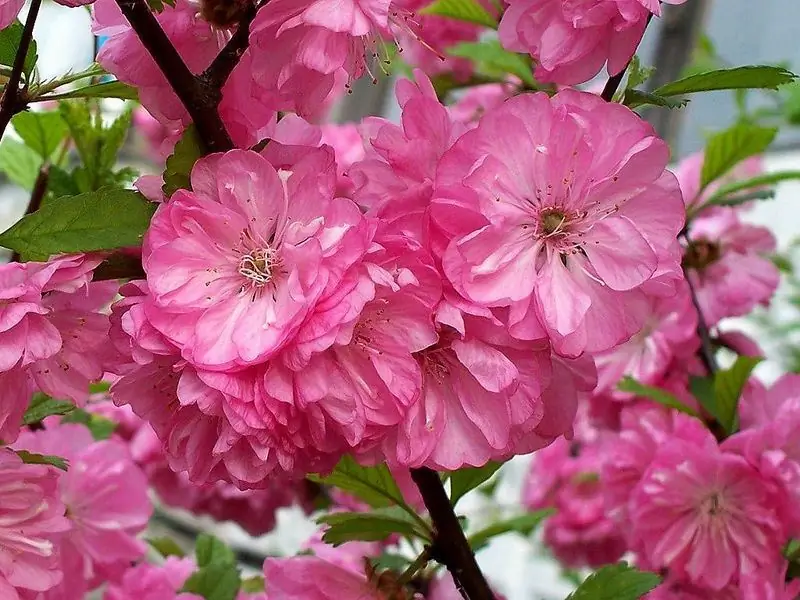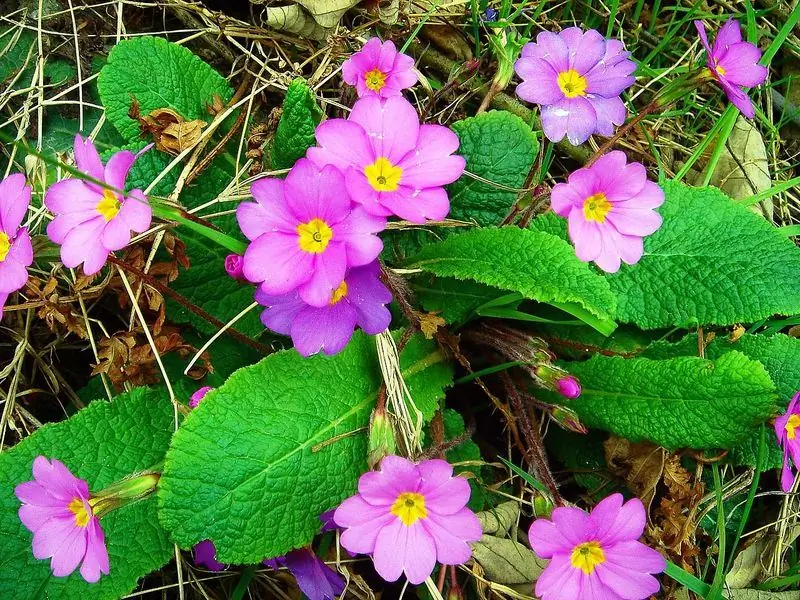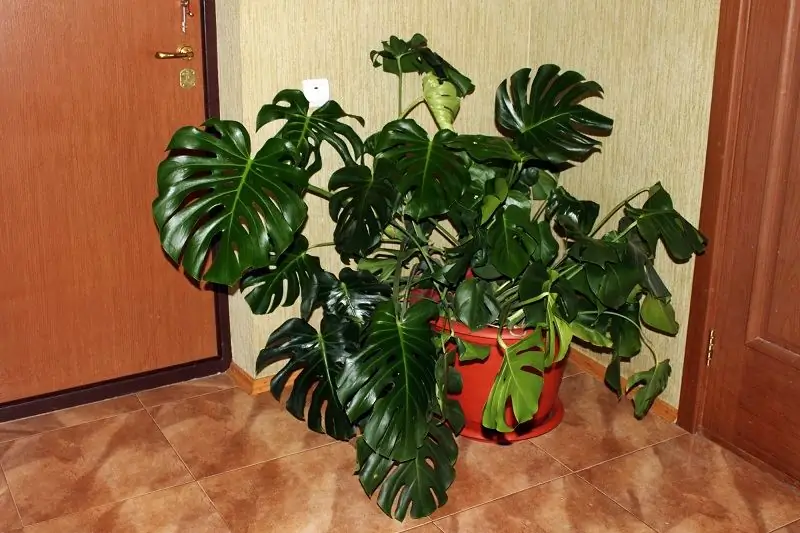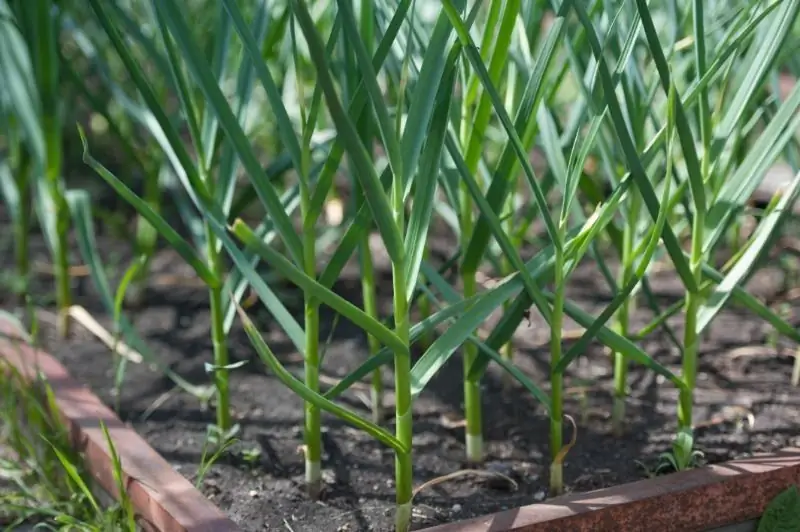
Table of contents:
- Author Bailey Albertson [email protected].
- Public 2023-12-17 12:53.
- Last modified 2025-01-23 12:41.
What shrubs are suitable for planting in the shade

It is not always possible to occupy shady areas of the garden with decorative plants. In such places, it is better to plant shrubs that feel comfortable in the shade. Among them there are cultures that successfully combine beauty and unpretentiousness.
Euonymus

The euonymus family includes more than 100 varieties of evergreen and deciduous shrubs. Winged, Fortune, Japanese and other species are famous for their bright foliage. Some with the arrival of autumn are painted in scarlet, while others have a two-tone green. This makes the shrub a convenient means for decorating the site.
For many types of euonymus, it is important to observe the features of planting and care:
- slightly alkaline, fertile and loose soil ideal for bushes;
- a place with a high groundwater table is not suitable for a plant;
- the ground is mulched with chips or bark to retain moisture;
- you can fertilize bushes with mineral complexes in the spring after pruning;
- warming is not required for all varieties of euonymus, but young plants are always wrapped up for the winter.
Haulteria

This shrub, like euonymus, is especially beautiful in autumn, when the leaves turn purple, orange and other bright colors. In summer, among the green leaves, rounded berries are hidden, which are edible, but do not have a very pleasant taste.
The haulteria recumbent and pointed is the most commonly used in site design, although this shrub is represented by more than 160 varieties. The fruits, in any case, have decorative characteristics. They can be white, red, purple.
Proper care will preserve the beauty of the shrub:
- spring pruning of dry and diseased branches, the formation of haulteria;
- maintaining moisture and loosening the soil, which is especially important in the heat;
- one spring and two summer feeding with complexes for rhododendrons and azaleas;
- mulching the soil around the bushes with pine bark or peat.
Elderberry black

Fruiting bushes take root well in shaded areas. Such plants can reach a height of 6-10 m. Sprawling branches with large leaves and small berries make the shrub bulky, so a lot of free space is required for its cultivation.
The elderberry flowers bloom in early June, it lasts about 3 weeks. The smell of the plant repels flies and other harmful insects. Then dark-colored sweet and sour berries ripen.
For an unpretentious plant, it is enough to follow several rules:
- planting is carried out in spring or autumn in slightly acidic (pH 6-6.5) fertile soil;
- watering should be regular (1 bucket per week), but the bush will survive a short-term drought;
- nitrogen fertilization is applied in early spring for good growth of green mass.
Derain red

This shrub from the dogwood family is well suited for landscaping experiments. You can see it blooming only in the seventh year after planting seedlings. At the same time, even young plants delight with brightness, since the stems turn red with the onset of autumn and look unusual. The hedges and alpine slides are especially beautiful.
In drought, the sod is well watered. Special feeding is not needed, but the plant accepts complex fertilizers well.
Many gardeners do not cover the trunk for the winter, since an adult bush successfully survives frosts down to -35 ° C. Young seedlings need protection for the cold season. To do this, use a covering material and mulch.
Caucasian rhododendron

The shrub is quite whimsical, grows well in warm climates. Other varieties of rhododendron can be grown in Siberia and other cool regions.
In a shady place, the rhododendron will feel good. The north side is suitable for landing. At the same time, the plant does not tolerate groundwater located close to the surface. Weekly watering, removing weeds, and covering the bush before winter are basic care.
Mahonia holly

Shade-tolerant bushes grow in central Russia and in the south. Magonia combines well with conifers and stone, but in the Russian "birch" landscape it looks like an alien object.
Mahonia bushes grow up to 1.5 m. In winter, the foliage does not fall off, but only slightly change its shade. In summer, the crown is rich green, with the onset of cold weather, it acquires a golden-red-brown tone, which lasts until the beginning of spring.
Snowberry white

The frost-resistant shrub pleases with flowering in July and remains a beautiful garden decor even in autumn, as it is showered with bright fruits. The berries can be white, pinkish, or red. They are poisonous, so the bush should be fenced off from children.
The bush belongs to the honeysuckle family and grows up to 3 m. Loose and fertile soil will be a good basis for a plant.
In hot and dry weather, the snowberry is watered 1-2 times a week. In the spring, a solution of rotted manure (5 l) should be added to the trunk circle. In the summer, a complex mineral preparation is suitable (applied once). At the end of the season, the bushes are fed with a mixture of 100 g of superphosphate and 50 g of potassium sulfate.
Shade-loving shrubs help to take empty spaces on the site and diversify the decor, while not requiring complex maintenance.
Recommended:
Ornamental Shrubs Blooming In Spring: An Overview With Names And Photos

A selection of popular types of ornamental garden shrubs blooming in spring: photos, brief descriptions
What Flowers Can Be Planted In The Shade: An Overview Of Plants That Do Not Like The Sun, Photo

A selection of shade-loving and shade-tolerant ornamental plants for summer cottages
Shade-loving Indoor Plants

Unpretentious indoor plants that are comfortable in the shade and their main conditions of detention
Perennials That Bloom In The Shade

What beautiful shade-loving perennials can be planted on your site
Plants That Will Yield In The Shade

What types of vegetables and greens can be planted in the shade and still get a good harvest
